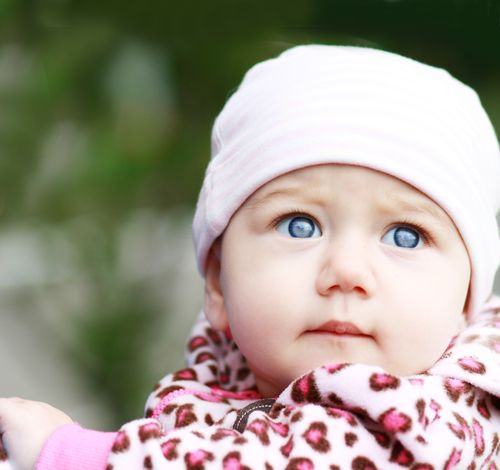Do Babies Really Learn Through Imitation? Brain Areas Associated With Movement Activate Upon Seeing Adults Move

Observational learning is a huge thing for babies. From making sounds to facial gestures, babies base many of their early movements on their parents and other adults. A new study figured out why this is: among babies, the areas of the brain associated with moving certain body parts become more active when they see adults move those same parts.
Using electroencephalography (EEG), researchers looked at how a group of 14-month-old babies’ brains reacted when one of the experimenters touched an interactive toy with their foot and with their hands. With each touch, the researchers saw higher levels of activity in the areas of the cerebral cortex responsible for the senses and motor movement — a correlation known as neural somatotopy.
“This study provides the first evidence that babies’ observation of an act produced by another person using a particular body part is associated with activation of the corresponding area of the infant’s own sensorimotor cortex,” the researchers wrote. The findings also support the theory that observing someone else’s movements can help the brain produce and monitor one’s own actions, the researchers said. In turn, this would “support imitation and facilitate the rapid cultural learning that characterizes the human young.”
For the study, 32 babies observed an experimenter touch a toy with either a hand or foot. Each time the experimenter touched the toy, it triggered a musical sequence paired with moving confetti inside a clear dome — meant to catch the babies’ attention. The EEG cap fitted onto the babies’ heads recorded brainwave activity, and showed that as the experimenter moved their hand, activity in the sensorimotor cortex responsible for hand movement rose. Findings were similar for foot movement as well. “The neural system of babies directly connects them to other people, which jumpstarts imitation and social-emotional connectedness and bonding,” co-author of the study Andrew Meltzoff, of the Institute for Learning & Brain Sciences at the University of Washington, said in a statement. “Babies look at you and see themselves.”
Another recent study showed that babies are so attuned to adults that they can discern when an adult is faking a situation. In other words, putting on a happy face right after you give your baby a shot will not make him or her believe that it was a good experience. During the experiments, whenever a baby was shown an emotion that didn’t correlate with their present experience, they spent more time observing the adult’s facial expressions in order to gauge their reactions.
But although a baby may learn many things through observation and imitation out in the world, they may actually begin learning language through hearing others speak while still in their mother’s womb. Using the so-called pseudowords “tatata” and “tatota,” among pregnant women, researchers found that the test babies’ brains became more active upon hearing the same words after birth. These findings point to the incredible ability of babies to mentally grasp external stimuli and use it to their benefit — alluding that they may know more than they let on.
Source: Saby J, Meltzoff A, Marshall P. Infants’ Somatotopic Neural Responses to Seeing Human Actions: I’ve Got You under My Skin. PLOS One. 2013.
Published by Medicaldaily.com



























